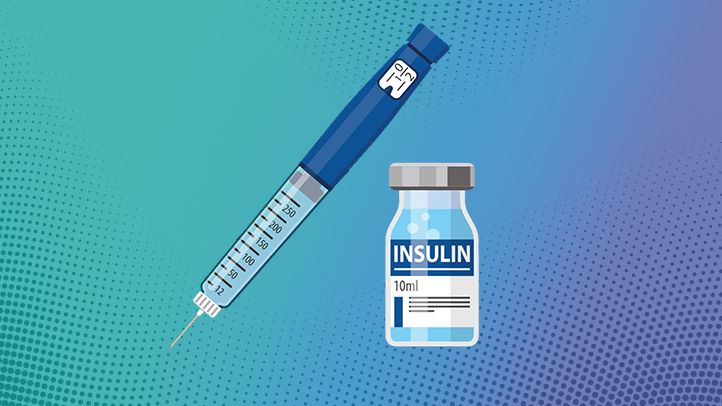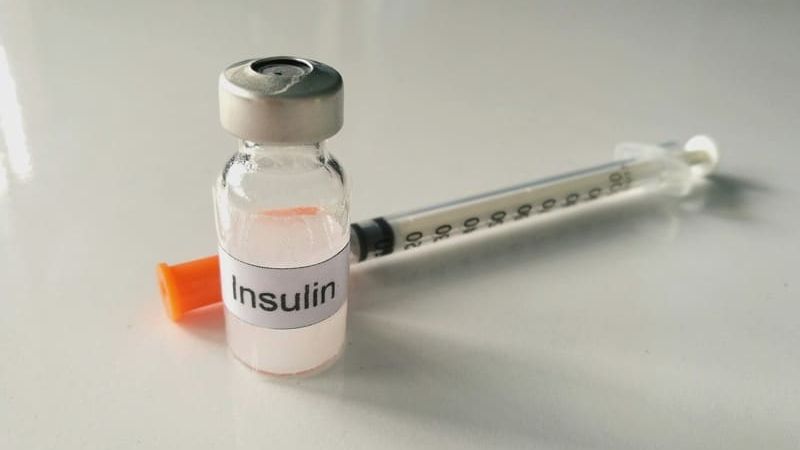How Insulin Injections Help Regulate Blood Sugar in Diabetics?
- admin
- April 1, 2025
- 4:44 am
- No Comments

Managing diabetes is all about balance — especially when it comes to blood sugar.
For many people living with diabetes, insulin injections are a vital part of keeping that balance in check.
But how exactly do these injections work?
Why are they so important?
In this article, BestDietarySupplementforDiabetics shall walk through exactly how insulin injections stabilize blood sugar and why they are essential for many diabetics.
Article Index
- Understanding the Role of Insulin in Blood Sugar Regulation
- Why Do Diabetics Need Insulin Injections?
- How Insulin Injections Mimic Natural Insulin Release
- Types of Insulin Used in Injections
- Timing and Administration of Insulin Injections
- Monitoring Blood Sugar Levels Alongside Insulin Therapy
- Potential Side Effects and Considerations
Understanding the Role of Insulin in Blood Sugar Regulation
To understand how insulin injections help, we need to first understand what insulin does in the body. Insulin is a hormone produced by the pancreas.
Its primary job is to help glucose (sugar) move from the bloodstream into the cells, where it is used for energy or stored for future use.
After eating a meal, carbohydrates break down into glucose, raising blood sugar levels. In response, the pancreas releases insulin to manage this rise.
Insulin acts like a key, unlocking cells so glucose can enter and be used. This process helps bring blood sugar levels back down to a healthy range.
Without insulin, glucose would stay in the bloodstream, causing high blood sugar — a condition known as hyperglycemia.

Why Do Diabetics Need Insulin Injections?
For people with diabetes, this natural process does not work properly.
In type 1 diabetes, the body’s immune system attacks the insulin-producing cells in the pancreas. That means the body makes little to no insulin at all. Without insulin, glucose can’t get into the cells, and blood sugar remains dangerously high.
In type 2 diabetes, the body becomes resistant to insulin. The pancreas might still produce insulin, but the body doesn’t use it effectively. Over time, the pancreas may not be able to keep up with the increased demand, and insulin levels drop.
In both cases, insulin injections help by providing the body with the insulin it either can’t produce or can’t use efficiently. These injections help move glucose into the cells and prevent blood sugar levels from rising too high.
How Insulin Injections Mimic Natural Insulin Release
Insulin injections are designed to act like the insulin your body would naturally produce.
There are two main patterns of insulin release that the body normally follows:
- Basal insulin is the low-level, constant supply of insulin that controls blood sugar between meals and during sleep.
- Bolus insulin is the surge of insulin released after eating to manage the rise in blood sugar caused by food.
Insulin therapy aims to replicate this pattern. Basal insulin injections maintain steady glucose levels throughout the day and night, while bolus insulin is used before meals to handle the glucose spike from eating.
By mimicking these natural rhythms, insulin injections help maintain a more stable blood sugar level throughout the day.
Types of Insulin Used in Injections
Not all insulin is the same. There are different types of insulin that vary in how quickly they start working, when they peak, and how long they last. Choosing the right type depends on individual needs, lifestyle, and how the body responds.
So, you need to first learn how to use insulin injections for treating your diabetes.
Here are the main types:
- Rapid-acting insulin starts working within 15 minutes, peaks at about an hour, and lasts 2 to 4 hours. It’s typically taken before meals.
- Short-acting insulin begins working within 30 minutes, peaks between 2 to 3 hours, and lasts up to 6 hours.
- Intermediate-acting insulin kicks in after 2 to 4 hours, peaks in 4 to 12 hours, and can last up to 18 hours.
- Long-acting insulin begins working several hours after injection and can last up to 24 hours or more without a pronounced peak.
Some people use pre-mixed insulin, which combines two types — usually one that works quickly and one that lasts longer — for convenience.
Choosing the right insulin (or combination of insulins) is a key part of successful blood sugar management.
Timing and Administration of Insulin Injections
Insulin injections are not just about what kind of insulin you take — when and how you take it also matters a lot.
Timing is everything. For rapid-acting insulin, it is important to take the injection shortly before eating — typically about 10 to 15 minutes before a meal. Short-acting insulin might be given 30 minutes before eating. Long-acting insulin is usually taken once or twice a day, at the same time each day, to keep blood sugar levels stable.
Injection technique matters, too. Insulin is injected into the fatty tissue just under the skin — commonly in the abdomen, thigh, upper arm, or buttocks. Absorption can vary depending on the site, with the abdomen generally offering the fastest absorption.
Site rotation is also important. Repeatedly injecting into the same spot can cause lumps or fatty deposits under the skin, which can interfere with insulin absorption. Rotating injection sites within the same general area helps avoid this.
Monitoring Blood Sugar Levels Alongside Insulin Therapy
Insulin injections don’t work in isolation — they need to be paired with regular blood sugar monitoring. This helps ensure insulin doses are doing their job and gives insight into how food, exercise, and other factors are affecting blood glucose.
There are two main methods for monitoring:
- Self-monitoring with a blood glucose meter allows individuals to check their levels multiple times a day, including before and after meals, after exercise, and at bedtime.
- Continuous glucose monitors (CGMs) offer real-time tracking by measuring glucose in the interstitial fluid beneath the skin. These devices can provide trends and alerts for high or low blood sugar, helping users make quick decisions about insulin dosing.
Regular monitoring is essential for adjusting insulin doses, spotting patterns, and avoiding both high and low blood sugar.
Potential Side Effects and Considerations
While insulin injections are extremely effective, there are a few side effects and risks that diabetics should be aware of:
- Hypoglycemia (low blood sugar): This is one of the most common side effects of insulin therapy. It can happen if too much insulin is injected, if meals are skipped, or if unexpected physical activity lowers blood sugar. Symptoms include shakiness, sweating, confusion, irritability, and in severe cases, unconsciousness.
- Weight gain: As insulin helps the body store glucose efficiently, some people may experience weight gain. This can be managed through diet and activity.
- Injection site reactions: Mild swelling, redness, or itching can occur where insulin is injected. Rotating sites helps minimize these reactions.
- Lipodystrophy: Repeated injections in the same spot can lead to lumps or indentations in the skin, affecting insulin absorption.
The key is consistent monitoring, communication with healthcare providers, and adjusting doses as needed based on lifestyle and glucose trends.

Conclusion
Insulin injections are more than just a treatment — they are a critical tool that helps diabetics regain control over their blood sugar. By mimicking the body’s natural insulin patterns, they allow glucose to move into cells where it’s needed, preventing the dangerous spikes and crashes that come with diabetes.
Understanding how and why insulin works helps take the mystery out of injections. With the right type, timing, and technique, insulin therapy becomes a powerful way to stay healthy and balanced — day in and day out.
If you are managing diabetes with insulin injections, knowing the science behind them can help you feel more confident in your treatment — and in control of your health.
References: